Have you ever noticed that buses (coaches if you want that level of precision) and trucks have different side mirrors? Buses used for longer journeys typically have large side mirrors that are positioned ahead of the cabin. They typically have a body-colour finish, sleek design and a single top mount. Meanwhile, a typical truck has much more simple side mirrors, mounted on the side of the cabin.
You may not even have a clue of what we’re talking about. But in many parts of the world, especially in Europe, buses and trucks do have different side view mirrors. Different regions adopt different designs for their vehicles – remember that semi trucks in Europe and the United States look way different.
Here is a good example of how different side mirrors on trucks and buses can be. In the picture below you see two Volvo vehicles. Both travel long distances, both were designed with aerodynamics and efficiency in mind, both are from approximately the same time.

You can see that the semi truck has much simpler side mirrors both in finish and design. They are mounted on the side of the cabin and would be observed through the side windows. Meanwhile the side mirrors of the bus are mounted in front of the windshield. The bus in the picture has fancy body-colour mirrors, which are definitely more expensive to produce, repair and replace.
And yes, a lot of buses, especially the ones that work exclusively in urban areas, have the same kind of side mirrors as that truck above. However, many coaches that travel longer distances have those horn-style side mirrors, because they are simply better.
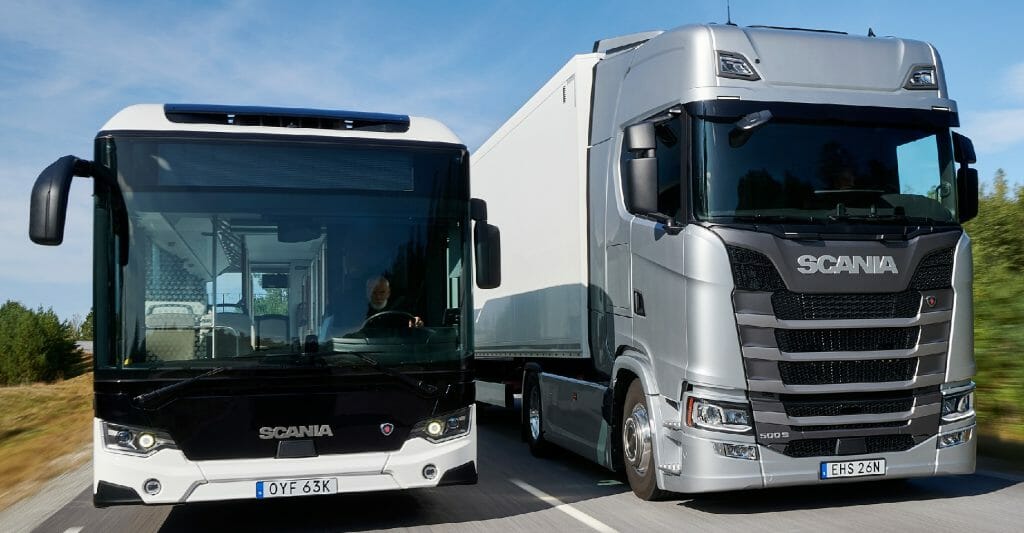
Buses have better side mirrors
These horn-style side mirrors have numerous advantages. They are more convenient to use, because they can be observed through the windshield – a bus driver doesn’t have to turn his head that much.
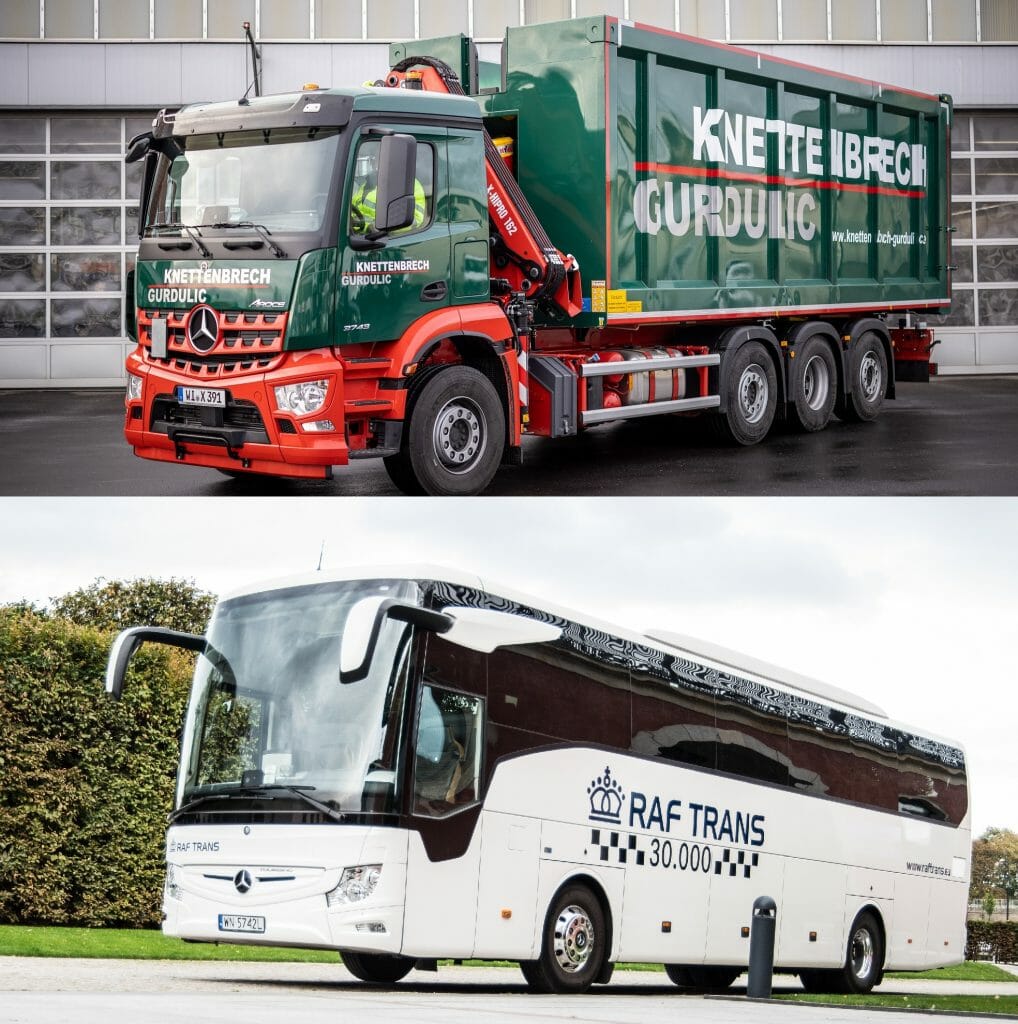
Furthermore, this mirror position reduces blind zones. Coach-style side mirrors allow the driver to see the entire length of the vehicle much easier. Obviously, this is an important safety feature, because the driver can see people getting in and out of the bus.
Bus side mirrors are also more aerodynamic. That fancy-looking fairing and a horizontal mount reduces wind resistance, which in turn helps keep the fuel consumption lower. It is a small improvement, but an improvement nevertheless. And while it may not be the most important point, side mirrors of that type look a lot better. At least to our eyes anyway.
But if coaches have better side mirrors, why don’t trucks use the same design?
Different machine – different mirrors
Who knows, maybe truck drivers would like to monitor the side mirrors without turning their head that much. And maybe logistics companies would like to have more aerodynamically efficient vehicles. But coach-style side mirrors are simply not suitable for trucks and here are some reasons why.
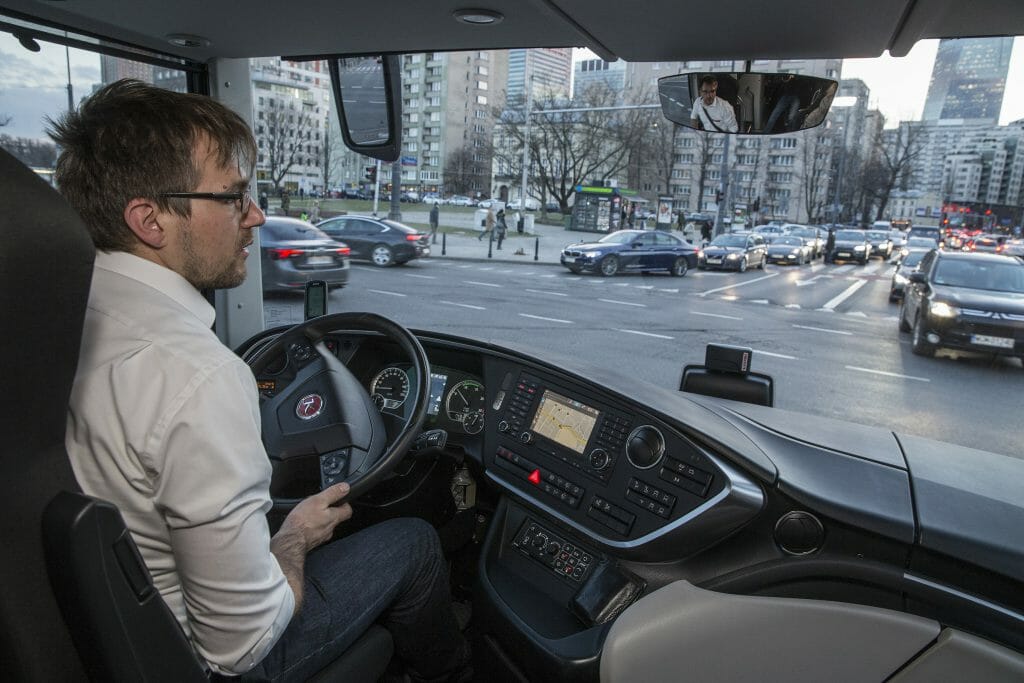
First Of all, the driving positions are very different. In a cab-over semi truck the driver is sitting above the engine compartment quite high above the ground. Meanwhile in a modern bus the engine is located at the rear, which allows creating a lower, almost car-like driving position. All of this to say that buses have taller windscreens, which leave more space for high-mounted side mirrors. On a normal truck that kind of side mirrors would actually reduce visibility – there is no space for them.
Secondly, trucks often operate in tight spaces, such as docks, logistical centres, ferries, etc. Front-mounted side mirrors increase the effective length of the vehicle and interfere with its boxy shape. This is less of a concern for buses, which are generally a bit shorter and stay away from industrial centres. But for trucks such mirrors would get in a way of parking in a crowded port.
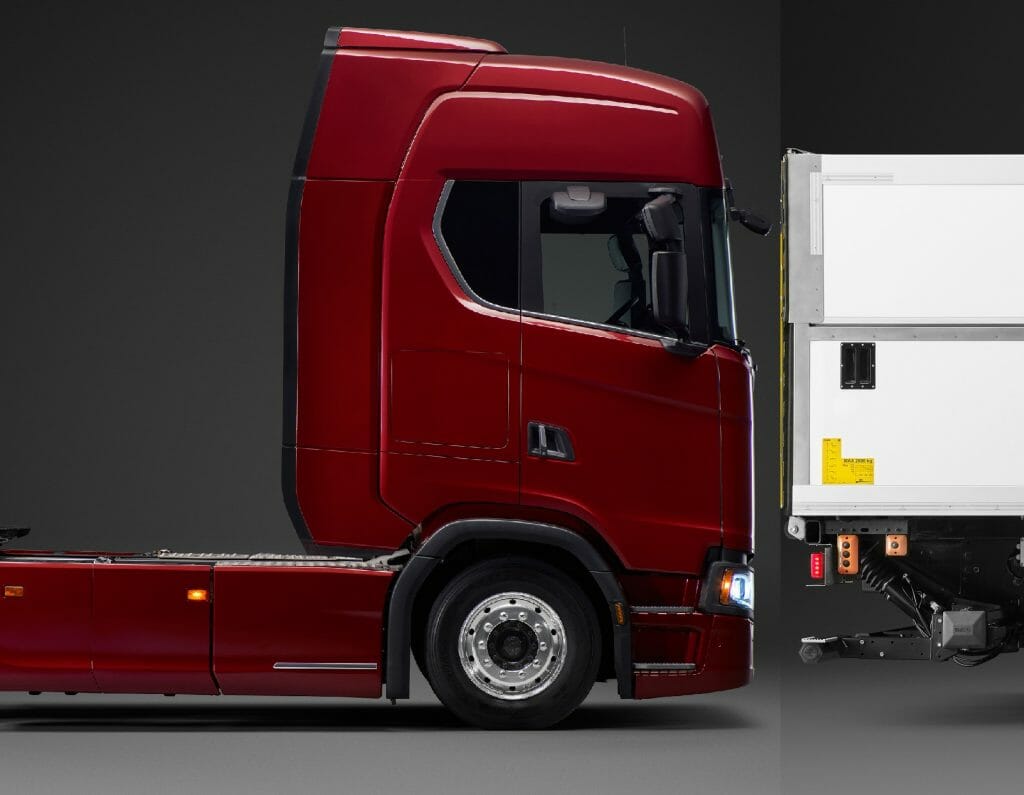
Finally, trucks do not really need side mirrors like that. They are great at observing the entire length of the vehicle, but truck drivers can live without this capability, because people are not constantly getting in and out of their machines.
Buses need side mirrors that are not attached to the doors and work effectively even when the vehicle is stationary. Simpler truck side mirrors are quite a bit cheaper and easier to replace in case of a minor accident. And looks are not that important for trucks as they are for buses – only one of those deal with people who have eyes and a taste for aesthetics.
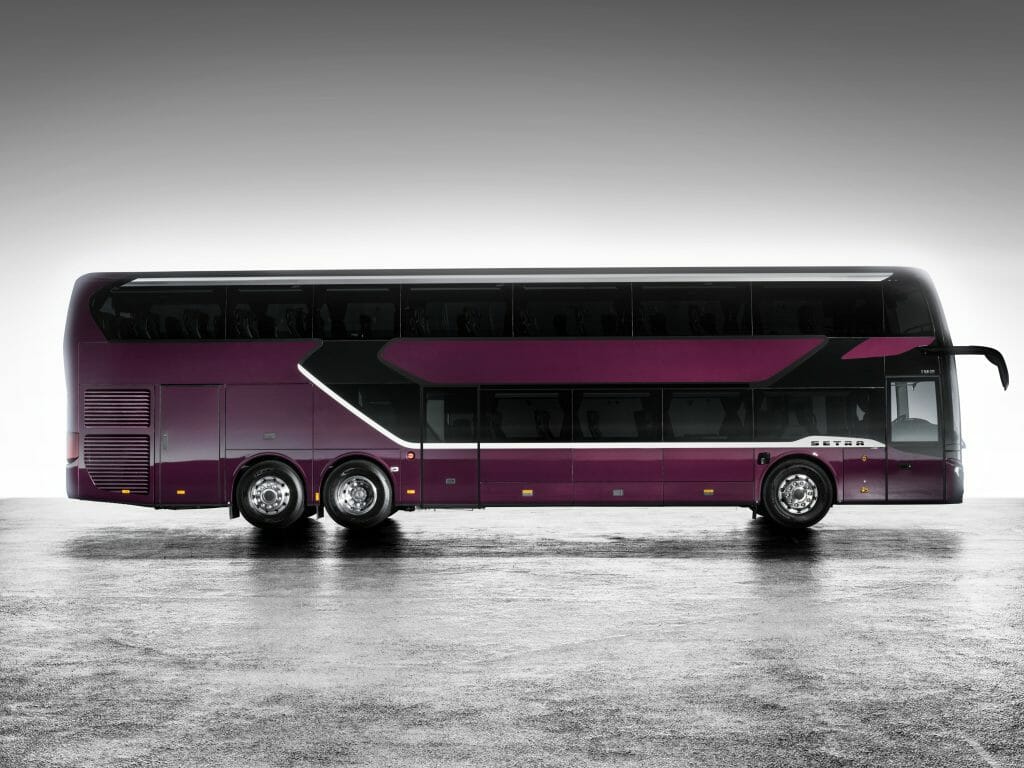
In the near future this entire debate will become irrelevant, because side mirrors will be phased out and replaced by cameras. In fact, there are already trucks that do no have conventional side mirrors. But for now if you ever see a bus with horn-like side mirrors you can proudly and super boringly explain to someone why they look like that and what advantages they offer.




